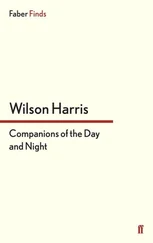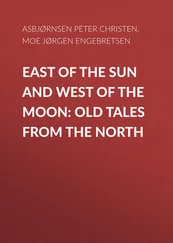Equally instructive is his account of Cyrus the Great, slightly later in Book 3. Cyrus had long served as a model ruler in the Greek imagination, but Berossos’s assessment is interestingly double-edged. On the one hand, he calls Cyrus philanthropos “a friend of humankind” ( BNJ 680 F 9a (151)), in the tradition of Xenophon’s Cyropaedia (Due 1989: 163–170; Gera 1993: 183–184). On the other hand, Berossos points out that Cyrus razed the outer walls of Babylon to make the city “less difficult to conquer” ( BNJ 680 F 9a (152)). This detail not only jars with the claims of the historical Cyrus but also implies a damning indictment from a Babylonian perspective (Haubold 2013a: 164). For illustration, we may consider the so-called Akītu Program , a Hellenistic text which describes the rituals that were performed at the Babylonian New Year’s festival. At one point during the festivities, the king came before the god Bel to make the following declaration (Linssen 2004: 223, lines 423–428):
[ul aḫ]-ṭu EN KUR.KUR ul e-gi ana DINGIR-ti-ku
[ul ú-ḫa-a]l-liq Eki ul aq-ta-bi BIR-šú
[ul ú-ri]b-bi É.SAG.GÍL ul ú-ma-áš-<���ši> ME-šú
[ul am-da]ḫ-ḫa-aṣ TE lúṣab-bi ki-din-nu
...[ul] áš-kun qa-lal-šú-nu
[ú-pa-a]q ana Eki ul a-bu-ut šal-ḫu-šú
[I have not sin]ned, lord of the lands, I have not neglected your godhead.
[I have not dest]royed Babylon, I have not ordered it to be dispersed.
[I have not made] Esagila tremble, I have not forgotten its rites.
[I have not st]ruck the people of the kidinnu in the face.
[…] I have [not] humiliated them.
[I have paid attenti]on to Babylon, I have not destroyed its (outer) walls.
At the New Year’s festival, the Babylonians confirmed their king in office, provided he accounted for his past actions, and renewed his commitment toward the city, its élites, and its major buildings. Acording to Berossos, Cyrus would not have passed this test. By destroying the city’s outer walls he did what no Babylonian king should do, his acknowledged capacity for philanthropia notwithstanding. Here, as already in his account of the Hanging Garden, Berossos mixes Greek and Babylonian registers to achieve a strikingly didactic effect: his work taught King Antiochus and his Seleucid Greek élites where to look for positive role models but also how to learn from past failures. For that, Berossos relied on bona fide Mesopotamian sources, but he could do so effectively only because he knew how to manipulate the relevant Greek cultural codes.
This last point is confirmed in Book 1 of the Babyloniaca , where Berossos establishes his credentials as a Chaldaean sage and conveyor of barbarian wisdom. As I have argued elsewhere, Berossos turns his account of Babylonian cosmogony in Babyloniaca Book 1 into a piece of Greek philosophical speculation (Haubold 2013a: 148–153, 2013b). In his paraphrase, the standard Babylonian creation account reads strikingly like contemporary Greek physics, with Tiamat playing the part of passive and malleable matter that is pervaded and shaped by a creator god. In order to develop this reading of his source text, Berossos makes use of allegory as a popular tool in Greek philosophy.
Almost equally telling for Berossos’s self-portrayal as a barbarian sage is his account of human creation. The relevant passage of the Babyloniaca has suffered corruption, but we can say with some confidence that here too Berossos changed the emphasis of his source text. This is what the Epic of Creation had to say (VI.7–8 (Lambert)):
lu-ub-ni-ma lullâ(lú-u18-lu-a). a-me-lu
lu-ú en-du dul-lu ilānī-ma šu-nu lu-ú pa-áš-ḫu
Let me create mankind,
they shall bear the gods’ burden so that the gods themselves may be at rest.
The speaker in this passage is the god Bel, who advertises to his fellow gods his decision to create mankind. Bel promises to free the gods from the chores of an earthly existence, a standard motif in Babylonian epic. The emphasis is on separating gods from humans, and on putting each group in its rightful place. Berossos adopts a different approach ( BNJ 680 F 1b (7)):
τοῦτον τὸν θεὸν ἀφελεῖν τὴν ἑαυτοῦ κεφαλήν, καὶ τὸ ῥυὲν αἷμα τοὺς ἄλλους θεοὺς φυρᾶσαι τῆι γῆι, καὶ διαπλάσαι τοὺς ἀνθρώπους· δι᾽ ὃ νοερούς τε εἶναι, καὶ φρονήσεως θείας μετέχειν.
[He reports that] this god cut off his own head, and that the other gods used the spilled blood to moisten the earth and form human beings. And that is the reason, he says, why humans are thinking beings and partake in the divine mind.
There are uncertainties about the transmitted text of this passage – did Bel really cut off his own head according to Berossos? (Haubold 2013b: 40–41) – but there can be no doubt about its overall meaning: for Berossos, in contrast with his Babylonian source text, the point of human creation was to make us like the gods. The idea would not have been alien to a Babylonian reader: in fact, it can be spun out of Babylonian creation accounts with relative ease. We may think, for example, of the Poem of the Flood and its play on the Akkadian terms ṭēmu and eṭemmu : man has understanding (Akk. ṭēmu ) because he was formed from a god who possessed this quality. The god’s flesh also endows us with a spirit (Akk. eṭemmu ), which serves as a memento of the creation process (OB Atra-ḫasīs I.223–30). Berossos, then, is not making a radical break with Babylonian tradition when he emphasizes the divine origins of humankind, but he does deviate from his main source in such a way as to make it conform with Greek philosophy and its project of raising man to a higher state of being. These are subtle manipulations, and they certainly do not amount to a wholesale rewriting of Babylonian myth in a Greek key. Rather, Berossos identifies and draws out convergences between the two cultures and their respective literatures. His perceptiveness in identifying such areas of convergence, and his ability to articulate them, can make reading his work a stimulating experience, despite its poor state of preservation.
Greeks and Babylonians: A Blueprint for the Seleucid Empire
Berossos, I have argued so far, devised a culturally composite approach that enabled him to articulate the history of the world from a hybrid Babylonian–Greek perspective. He did not simply translate Babylonian thought into Greek categories or impose Greek thought onto Babylonian tradition but rather explored areas of convergence between two cultures. His means of doing so were subtle; he would fill gaps in the historical record and select from among competing versions of a given myth. Sometimes, a subtle change in emphasis was all that was required. At other times, Berossos could be bold in his defiance of cultural boundaries: his account of human creation is perhaps the clearest example. Berossos, however, was no utopian thinker, and his text was not calculated to promote nebulous notions of human community. Rather, it addressed some of the very real concerns of his Seleucid Greek audience.
Berossos’s Seleucid voice can clearly be heard in some passages in the Babyloniaca . Let us return to the model king Nebuchadnezzar II. This is how Berossos describes his building works in Babylon ( BNJ 680 F 8a (139–40)):
αὐτὸς δὲ ἀπὸ τῶν ἐκ τοῦ πολέμου λαφύρων τό τε Βήλου ἱερὸν καὶ τὰ λοιπὰ κοσμήσας φιλοτίμως, τήν τε ὑπάρχουσαν ἐξ ἀρχῆς πόλιν καὶ ἑτέραν ἔξωθεν προσχαρισάμενος, καὶ †ἀναγκάσας πρὸς τὸ μηκέτι δύνασθαι τοὺς πολιορκοῦντας τὸν ποταμὸν ἀναστρέφοντας ἐπὶ τὴν πόλιν κατασκευάζειν, ὑπερεβάλετο τρεῖς μὲν τῆς ἔνδον πόλεως περιβόλους, τρεῖς δὲ τῆς ἔξω, τούτων <���δὲ> τοὺς μὲν ἐξ ὀπτῆς πλίνθου καὶ ἀσφάλτου, τοὺς δὲ ἐξ αὐτῆς τῆς πλίνθου. καὶ τειχίσας ἀξιολόγως τὴν πόλιν, καὶ τοὺς πυλῶνας κοσμήσας ἱεροπρεπῶς, προσκατεσκεύασεν τοῖς πατρικοῖς βασιλείοις ἕτερα βασίλεια ἐχόμενα ἐκείνων
Читать дальше












